Craters of the Moon, Idaho
We were camped about two miles off the pavement, on a dusty road the east side of Antelope Reservoir (OR). And the weather was coming in. A major early-winter storm was going to turn the road to slick gumbo, literally trapping Howie and Ralph in the back country for many days – – – we had to leave.
Our destination: Craters of the Moon National Monument in Idaho.
We drove out of Jordan Valley, north on US95, while the weather was still nice. After 40 miles or so, the hills opened up a bit, and the broad expanse of the Snake River Valley came into view.
Curving around up through Marsing, we headed eastward through the Nampa/Boise area. We had a lot to do in one day, catching up on phone calls, Internet, groceries, gas, and even a faulty Verizon hotspot issue. So we blasted through the populated areas (which we don’t covet anyway), and took note of the usual clusters of concrete and freeway lanes.
Honestly, after navigating Los Angeles and San Francisco Bay Area congestion, Boise wasn’t really a contender. But it was still Civilization, which is not what we travel to visit. Soon, the traffic and clutter were left behind, and the open plain surrounded us. Tooling along I-84 at Howie’s sedate pace of 60mph, we marveled at what must surely be the world’s highest cell tower – – –
– – – and perhaps one of the world’s highest speed limits (not counting the Autobahn).
We were eager to get off the Interstate, and grateful for the ID20 turnoff. We started the drive that runs along the very northern edge of the Snake Valley, skirting the mountains which were once so remote that the miners couldn’t even get at the gold hidden there.
The countryside was dotted sparsely with dry, struggling ranches and the occasional whistle-stop. We were wanting to get to our destination, so we did not partake of the roadkill pattymelt. I hope we don’t live to regret that decision – – but then, I would have hoped not to regret the decision to stop, either. Coin toss.
As we approached the Monument, the desert began to be overtaken by the dark masses of lava.
Inside the Monument, we found a spectacular campground nestled among the chunks of black rock.
This was easily the “prettiest” campground we have ever visited. It turned out that (unknown to us) the campground had been closed for the entire summer for renovations, and opened up only two weeks before we got there. It was done in a dark motif to blend with the lava flows, and everything was nearly brand-new. Clean, tidy, paved, and a perfect place to explore and sit out the imminent weather.
Here’s a view of the campground from the lip of a nearby cinder cone – – –
– – – and in the other direction, one of the hundreds of extensive lava flows that make up the Monument.
At first blush, Craters of the Moon is just an enormous blotch of ugly broken lava. In fact, the early travelers and settlers held this zone in such poor regard that it was unexplored and unsettled for decades. Even the Indians didn’t do much here, but they did have some spiritual regard for it.
In fact, this huge tract of land (it’s about 1,200 square miles) is unique, startling, intriguing, and almost gruesomely difficult. Explorers found their shoes, and their animals’ feet, worn and shredded by the razor-sharp stoneworks. [While we were exploring one day, Karin put her hand out to steady herself, and wound up with a small handful of razor cuts on her palm.]
Perhaps most evident from space, as shown in this Monument placard, the lava flow(s) are a gigantic birthmark on the face of the land, spreading from the foothills of the Sawtooth Mountains almost all the way to the Snake River.
It is home to some of the more bizarre geological structures and forms, and in the week we spent here, I found myself continually frustrated with trying to photograph the place. Both the vastness, and the nuances, did not translate well to the photo frame. I hope that I’ve at least captured a small bit of the essence of what it truly an impressive piece of landscape.
Lava assumes a vast variety of shapes and contours, but at the very top of the hierarchy, there are essentially two basic lava types.
A’a – – This is pronounced as if you just stepped barefoot on broken glass (‘Ah! Ah!’), which is probably how the Hawaiians named it. The a’a lava type is chunky, broken, hard-edged. It looks for all the world as if a bunch of discarded slag rock got dumped in ragged piles across the landscape. A’a is formed by silicon-rich rock, which has little elasticity and is quite brittle. It easily breaks up into chunks.
Pahoehoe – – Pronounced ‘pah-hoey-hoey’, this lava forms and cools like creamy peanut butter or un-baked bread dough.
Cinders — When a powerful enough eruption occurs, bits and blobs of molten rock are thrown skyward, and cool on their way down. Volcanic cinders are like crusty gravel, and vary from sand-size to pea-size to much larger chunks.
Just about everything around the Monument is formed from these basic shapes and types, and it’s just mesmerizing how much variation in size, form, and beauty there is to be found.
By the time we arrived, the visitors’ center was closed, so we just snuggled down in camp and began a week-long “thermal management” regimen. The temps were unseasonably low for October, 40F daytime and 30F nights, so we had to be careful to keep Howie’s water pipes from freezing.
Next morning, we hit the Visitors Center, got some info and set out for our first of many days of hiking and exploring. With 750,000 acres, we were able to only sample some of the northern section of the Monument. There are few trails and fewer roads in the area, so getting up on top of the cinder cones is an excellent way to get a view of the enormity of where we were.
In many places around the Monument, vegetation has achieved a respectable foothold. Substantial trees (for the area and rainfall) stay rooted against fierce winds and seasons, and grasses and sage spread out and around the rocky ground. The distant parking lot (see Ralph?) is concealed by terrain and foliage.
In other places, even the 2000 years since the last eruption haven’t been enough for anything except lichen to establish a foothold. It’s as barren as if it just cooled off yesterday.
Here’s a view of several different zones — the dark blackness of a’a lava, lighter gray of pahoehoe, and light gray-greens of vegetation. The foreground had been vegetated long enough for a tree to grow old and die, while some of the distant dark areas had little more than lichen and a few tufts of grass.
Arco
Not with any kind of shenanigans could we get a reliable cell signal in the Monument, although a few high spots would pull in some emails. In order to get caught up, make phone calls, or publish blog posts, we had to at least go up to the overlook just northeast of the entrance drive. But better yet, the town of Arco was only 18 miles north, and they had a genuine cell tower. It’s an unpretentious place, with what we’ve come to regard as “normal”, a host of closed, boarded-up businesses. In rural parts of our country, many, many places have simply never recovered from the last Recession.
It’s a tidy and unremarkable town but for one oddity. See the numbers up on the cliffs behind the town? Turns out, sometime back in the early 1900’s, the local high school emblazoned their graduation year on a cliff face. The tradition has continued since then. I haven’t figured out how they’ll deal with the century overlap. Four characters? Yeah, we saw 2000 and 2001. But if so, where are 2002-2016? (We didn’t spend a lot of time trying to figure this one out.)
As it so happens, Arco was the first town to be nuclear-powered, as commemorated by this sign and the numerous references to “atomic” throughout the local area.
It’s a rather thin claim, in that the town appears to have been powered by the nuclear plant for something like 1-2 hours before being returned to normal sources. Oh well, famous for something, right?
Despite its harshness and ragged nature, the lava is surprisingly fragile, and easily smashed and damaged. Think of it as thin, crusty glass. As a consequence, there are many, many signs to stay on trails and NOT travel cross-country, even on foot. In order to support these requests, the Park Service has made some truly excellent trails throughout the Monument. Some of them are simply established paths through the lava cinders, while others are carefully filled and paved ribbons across the extraordinary expanses of lava. This one is the path out to the lava tubes and caves on the eastern side of the loop road.
In fact, these paths are pretty tame, and navigable by pretty much any visitor.
Lava Caves and Tubes
These are some of the coolest structures in the Monument. Several “official” caves are made available to explore, and there are hundreds more pieces and partials that help to understand some of the nature of the flows.
All tubes and caves are formed by a pahoehoe flow, where the outer surface of the flow cools and hardens while the inner lava stays molten and continues to flow. Eventually, either the flow stops (solid ridge) or the source quits and the lava flows out from inside the tube and leaves it hollow.
The temperatures involved are insane, well over 2000F, and the cooling causes extreme shrinkage of the rock. This in turn results in layering, fracturing, and even cave-ins of the outer shell. Here’s a typical tube/cave whose ceiling crumbled and collapsed.
Another one about five feet high – – –
– – – even a little teeny guy at the edge of the pathway. These lava shells and bubbles come in all sizes and shapes.
Of the three tubes on the designated tour, Indian Tunnel is by far the largest, with a big steel staircase going down into the cavernous entrance.
Indian Tunnel is also the best-lit, having several broken areas in its ceiling. Even though it’s a quarter-mile long, you really don’t need a flashlight.
Footing everywhere is anywhere from dirt-simple to broken-ankle tricky. Careful. It’s probably 150 miles to a decent hospital.
All the other caves are fully underground and inky black. Even with a flashlight, after the bright daylight we could barely see where we were going. And they are much smaller and have lower ceilings. A hard hat would be handy.
In any of the tubes/caves, you can find places on the ceiling where the lava, when cooling, formed stalactites. You have to stare at it for a while, and then you can begin to understand that melted stone dripped down to create these. 2000F liquid rock. The ones shown are about 3-4 inches long. Other longer ones have been broken off and taken away by people who consider themselves more important than the rest of us.
You can see a few of the representative formations by a simple drive around the 7-mile loop tour. But there are real riches for anybody who wants to walk back away from the roads. We had plenty of time, so we did both. We did some short, medium, and long (for us) hikes, including a 10-mile round-trip into the southern back-country via the Wilderness Trail.
At the southern end of the driving road are some excellent spatter cones. These are formed when an eruption is not vicious enough to throw cinders way up into the sky. Instead, it kind of sputters and spits, and the blobs of lava are deposited very locally. These cones also tend to be steeper, because the lava is still molten and sticks to itself.
A short hike/climb along the road is Inferno Cone. It’s pure cinders, and because cinders won’t hold moisture near the ground surface, almost no vegetation grows on this cone.
It’s only 100 feet of climb to the top, no big deal. Think ten flights of stairs. Looking back toward the parking lot, the pale non-lava-flow Sawtooth Mountains are in the background, literally just across the highway.
Everywhere we went, we were frequently near fields of tiny gray flora that looked for all the world like they’d been planted by hand in a regular pattern. Turns out these are pygmy buckwheat, and the little 3″ plants have three-foot root systems. Their roots make them somewhat “territorial”, and they won’t grow any closer together or they’d be competing for scarce water.
Here’s another field of buckwheat, across the plain from Crescent Butte, on the Wilderness Trail.
Ten miles doesn’t seem like much, and it was mostly semi-level. But we still needed a water break, and of course a chance for a selfie. This old dead limber pine came in handy.
The trail is reasonably well-marked, but occasionally not much more than a cow-path. We had to seek it out now and then, but we never actually lost it.
We scared up a coyote at one point, but he wanted nothing to do with us and scooted out of camera range (and rifle range) in a real hurry.
The trail navigated across miles and miles of older lava flows, where vegetation has had a chance to get established. They call this the high desert “steppe”, and it’s a totally different view than in the fresh new lava of the northern Monument area. But the stark black rock still makes its presence known.
With the weather lowering as we headed back to camp, we realized that we had two hours of hiking ahead of us, but likely only 30 minutes of sunshine. We quickened our pace a bit.
But rain or not, we had to stop by the “tree moulds”, where flowing lava surrounded trees and took the shape of their trunks before burning them to a crisp. You can even see the texture of the incinerated bark.
We managed to trek our way back under the lowering skies, in time to not get soaked.
Once within running distance of Howie, I got more brave. I put on my rain fedora and strolled around camp in the drizzle. (It’s not good for you to stay indoors too much, y’know.)
Other days, other places
We hiked most of the Monument trails and took in many sights and scenes not available from a drive-by tour. The North Crater trail is a great off-road hike, even within walking distance of camp. It’s much shorter than the southern trail (less than two miles), but has almost 800 feet of climb, and we did it on a fiercely windy day. Walking along the rim of a cinder cone, with a 45mph breeze trying to blow us into it, was one of our memories.
Here’s and area of the North Flow, one of the newest in the Monument. A mix of a’a and pahoehoe, almost without any growth. The structures in the center are thought to be the remnants of a cinder cone wall. Nobody is sure whether it grew here, or floated on a lava flow from somewhere else. And yes, there are people who argue about such things.
From high up the North Crater trail, we can see the plains surrounding Arco to the northeast. It’s easy to imagine what it must have been like to live in the area and fearfully watch the red-hot lava encroaching on the mountain foothills. “How close will it come?” The last eruption was 2000 years ago – – I wonder who might have been here to ask that question.
This is a huge pahoehoe flow below North Crater. Rock Porridge.
Atop the lip of a cinder cone, at the northern end of the North Crater trail, I have my head tucked down and I’m walking on the upwind side of the crater. The winds are blowing 40mph and gusting to 50mph, and it’s not unthinkable to be blown off the path and down into the crater. Could be a fun ride, but no thanks.
The North Crater trail can be steep, rugged, craggy, or all three at once. Max gradient is 94% (that’s just a bit less than 45 degrees). One of the smooth parts (but steep) is in the background. The foreground rubble is actually part of the trail.
A view to the southeast, outside the Monument (see the black fringe?). The large cinder cone is Big Southern Butte, the highest in the area at 7560′. Unlike the “new” stuff in the Monument (2,000-16,000 years old), this big boy was formed about 300,000 years ago. There’s a hang-glider launch on it (according to the map), and a nearby airstrip (which I’ll bet is used for glider launch). We didn’t visit it, but I imagine it kicks up some fierce updrafts, jutting as it does up out of a smooth plain.
The North Crater trail connects between two spots on the driving road, and can be entered from either end. Initially, we’d planned to do an out-and-back, directly from camp, and experience the trail in both directions. But after almost two hours fighting the wind, including uphill in some stretches, we left the 800′-climb return trip for another day and walked the road back. Call us wimps, we don’t mind.
GLIMPSES of LAVA — No particular place or journey, just some snapshots from around the Monument.
It wasn’t all dodging rain and keeping warm. We had some good weather too. Here’s a gorgeous blue afternoon out on the cave trail.
This is an excellent example of the ropy, folded character of pahoehoe lava. The pink/orange spots are from breakage.
A boiled rock fragment, a small sample of the stuff of which cubic miles lay under our feet.
These busy little chipmunks were all over the place everywhere we hiked. They’re about three inches long, with five-inch tails, and were furiously storing up for the winter.
Hikers on the lava tube trail. They look like they’re treading the lava ridge, but they’re actually on the paved trail.
Another in an infinite series of examples of lava art. A stone fantasy. I could fill a book with stuff like this.
By the path, a pahoehoe bubble with the outer crust broken by footsteps, and more undulations beneath.
After the storm, we drove up to a nearby overlook for a sip of Internet. There, we looked northeastward from the edge of the Monument – – – to the Snowy Sawtooth Mountains, beyond Arco.
The weather had gotten even more chill, 38F days and 28F nights. It was getting harder and harder to keep Howie’s pipes from freezing. So, after a really fine week in Craters of the Moon, we pulled up stakes. Well, to be precise, we pulled up leveling jacks.
We headed out southbound to a place we’d only seen on a map: City of Rocks National Preserve in southern Idaho.
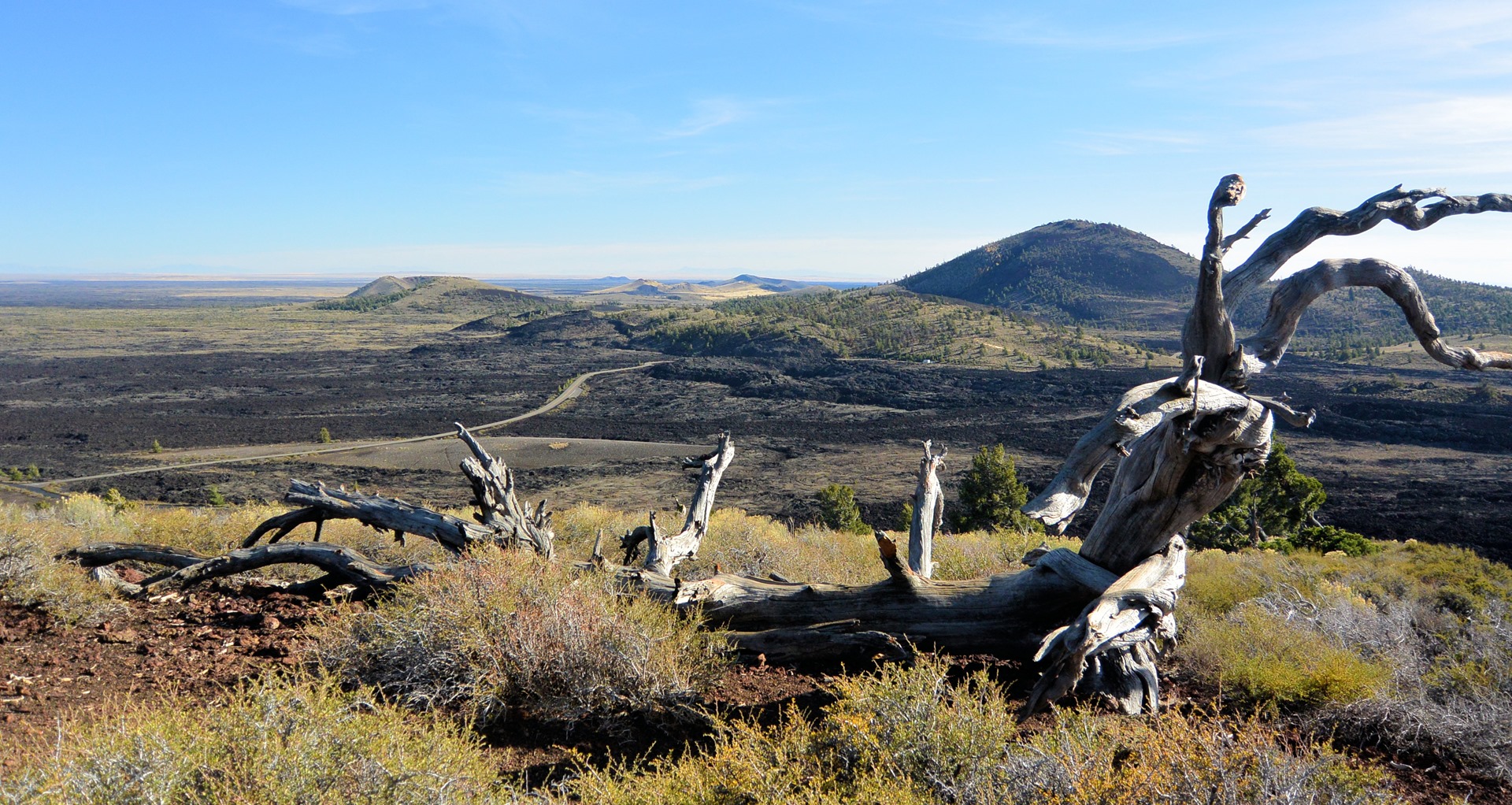
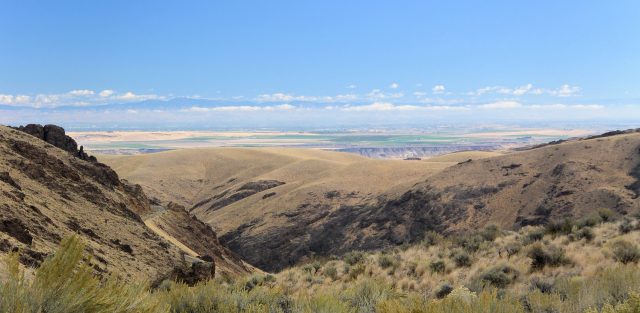
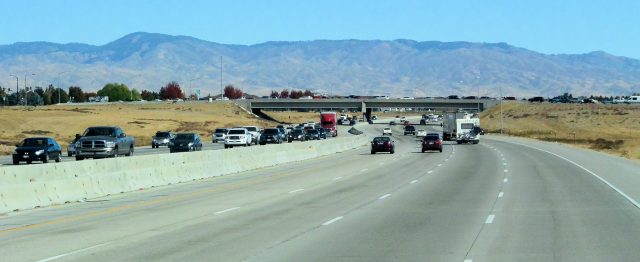
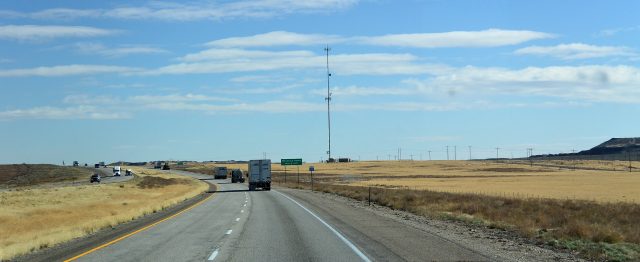
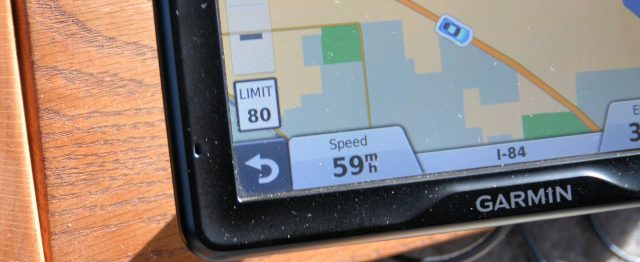
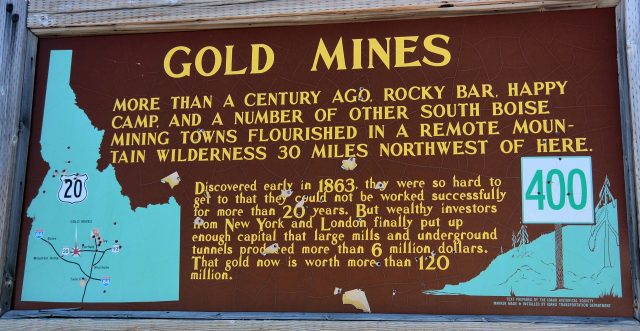
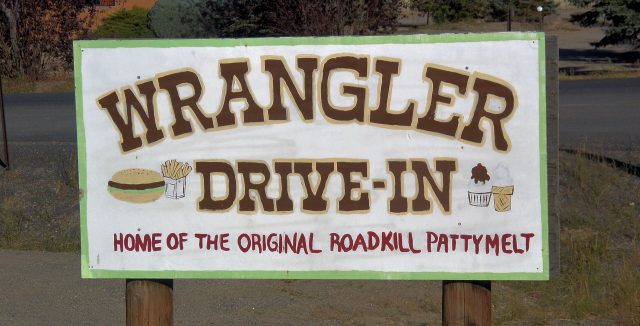

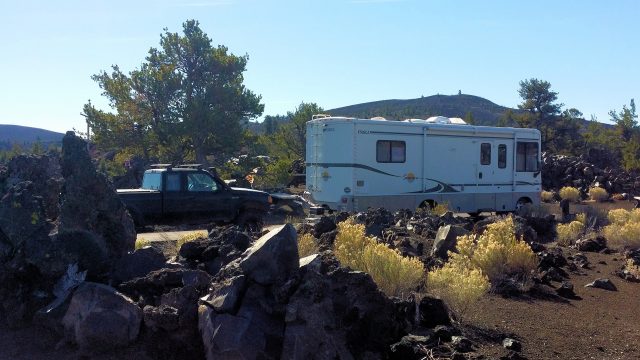
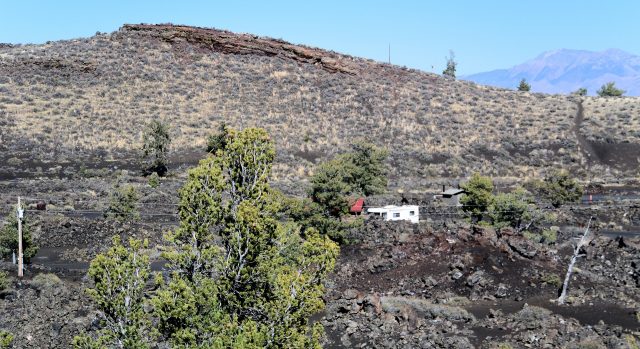
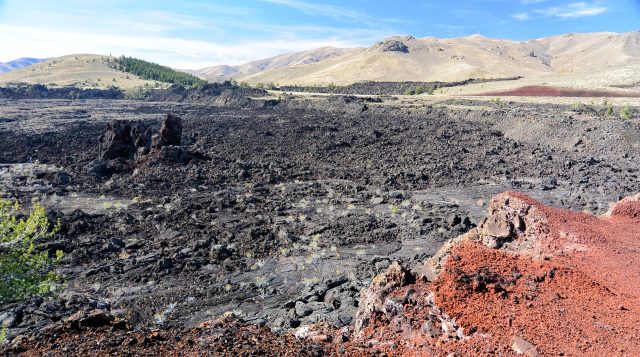
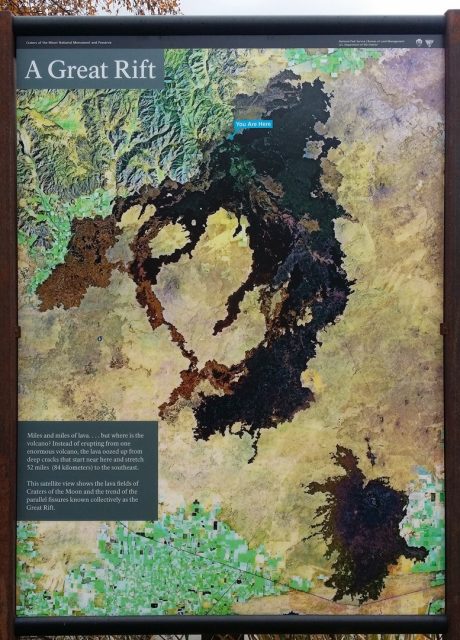
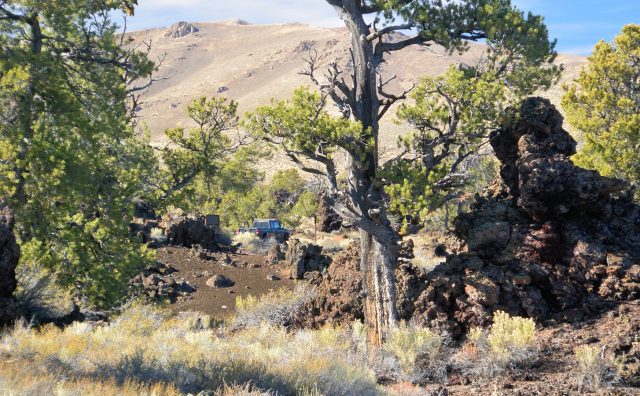
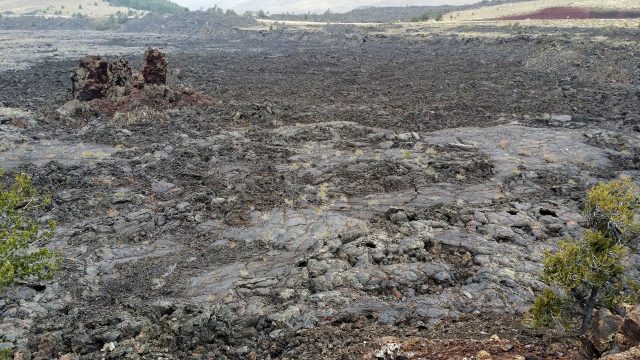
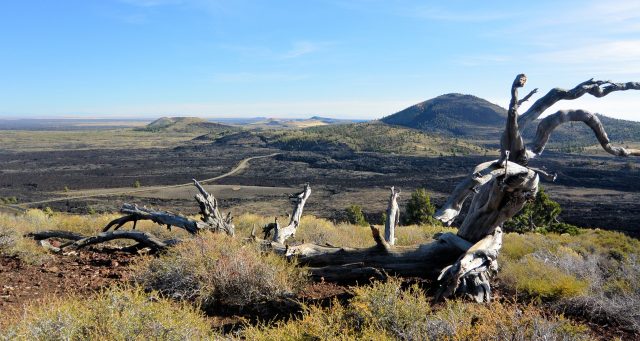
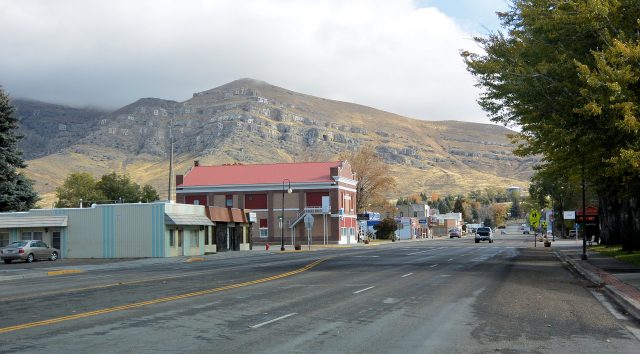
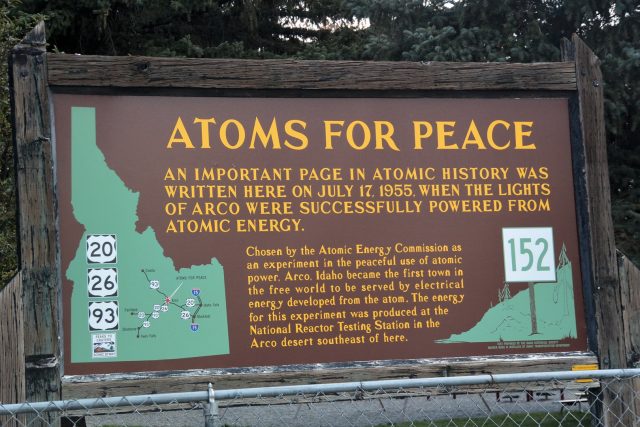
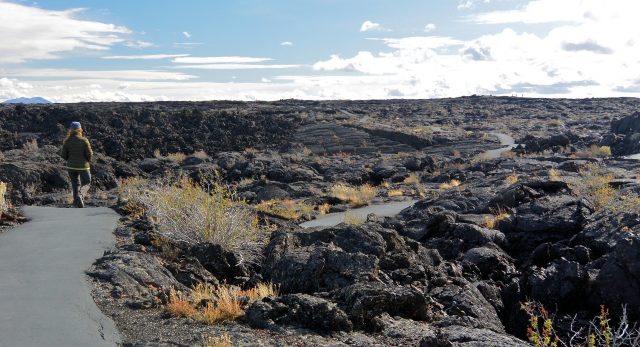

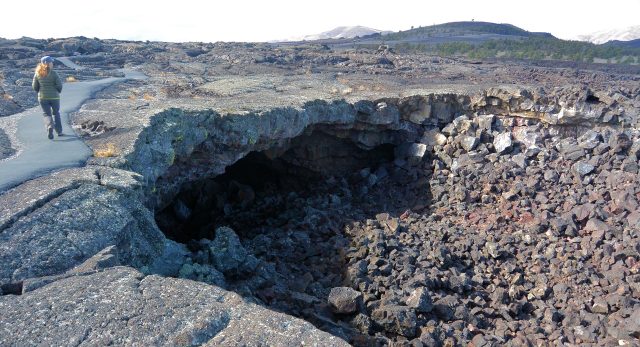
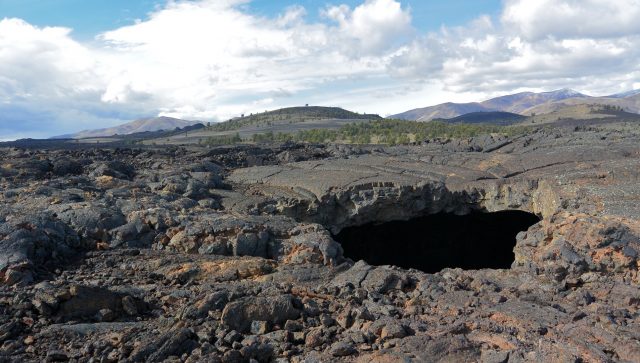
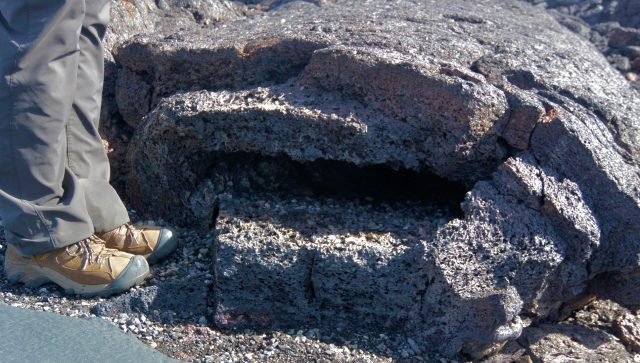
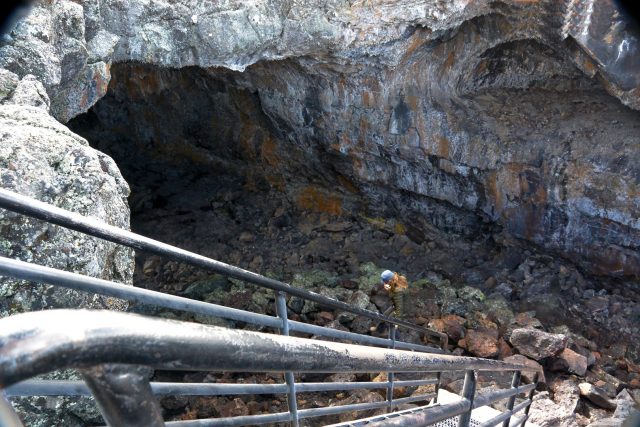
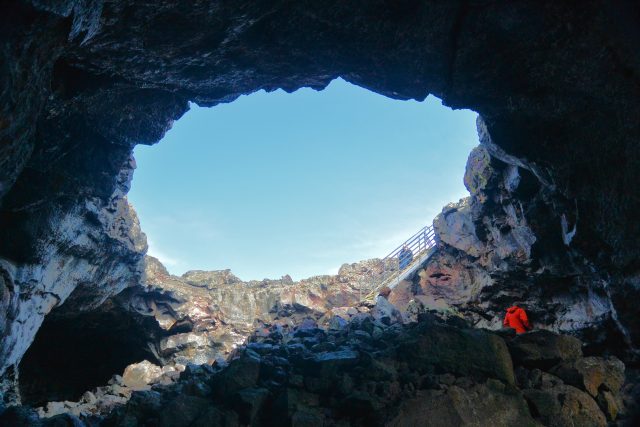
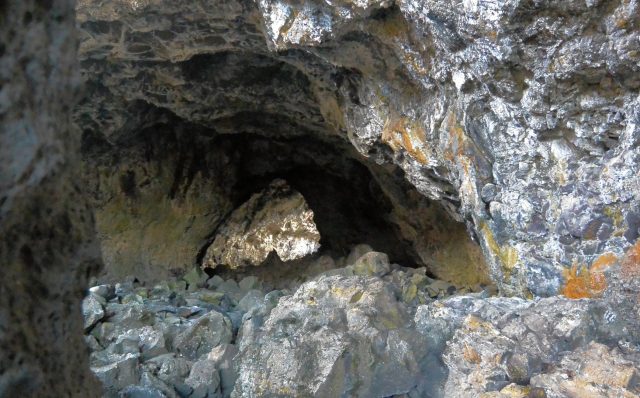
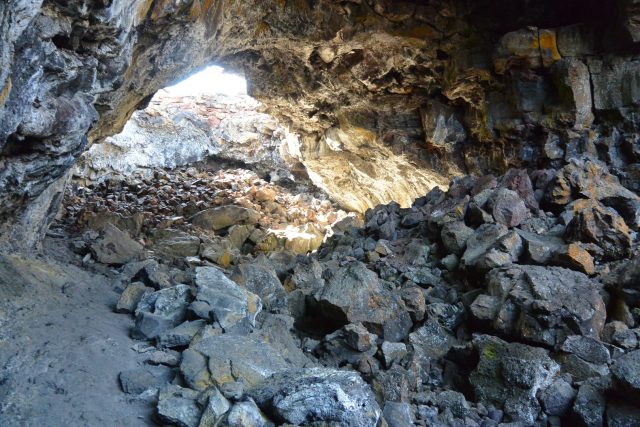
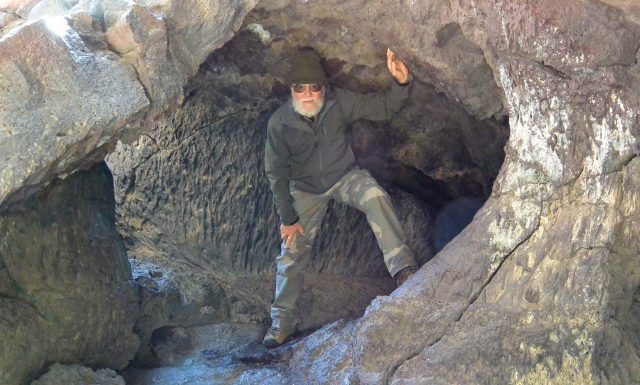
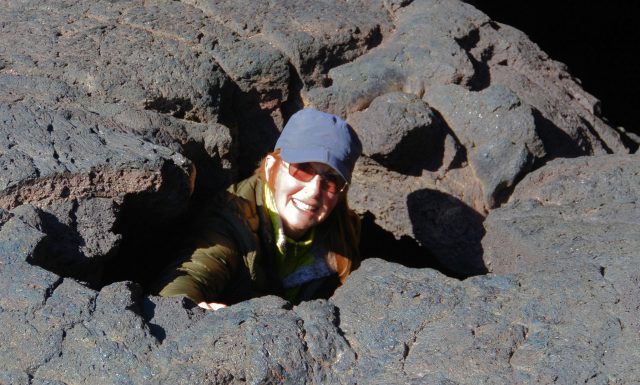
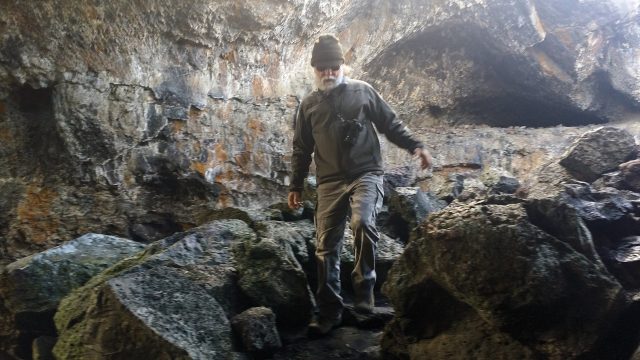
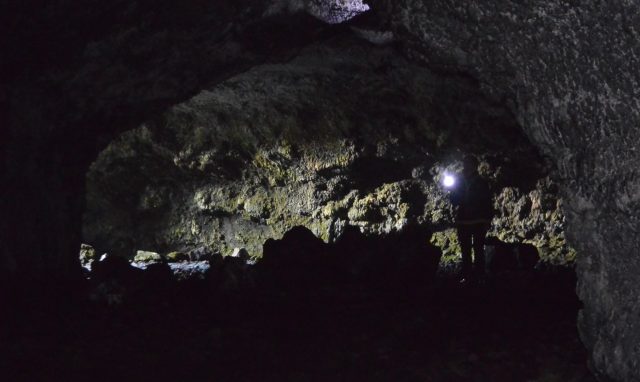
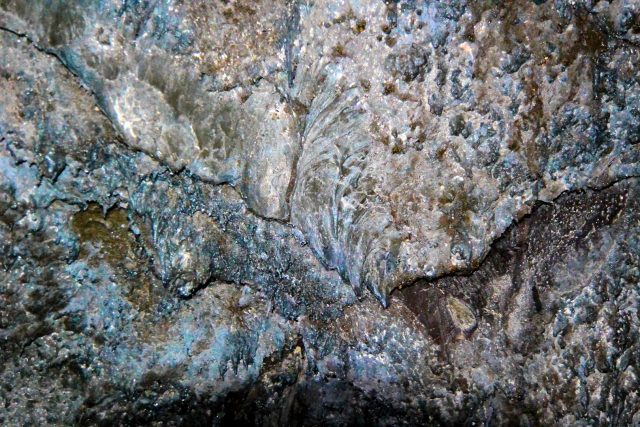
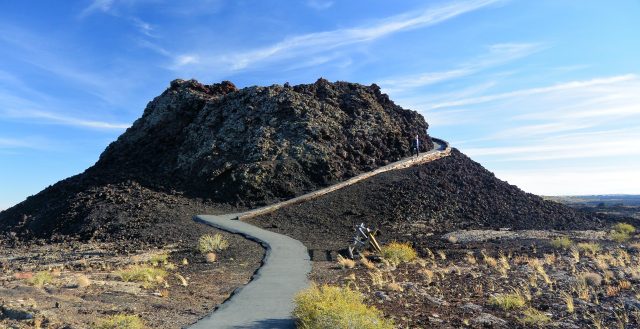
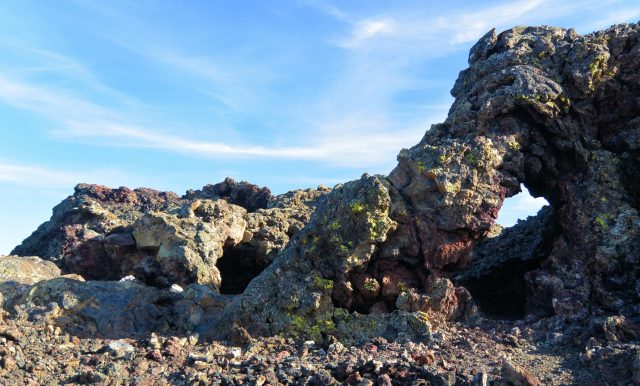
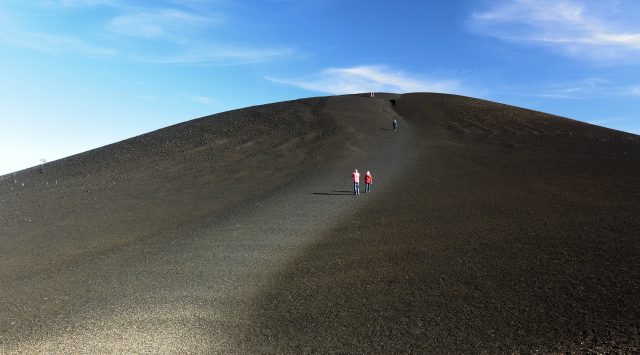
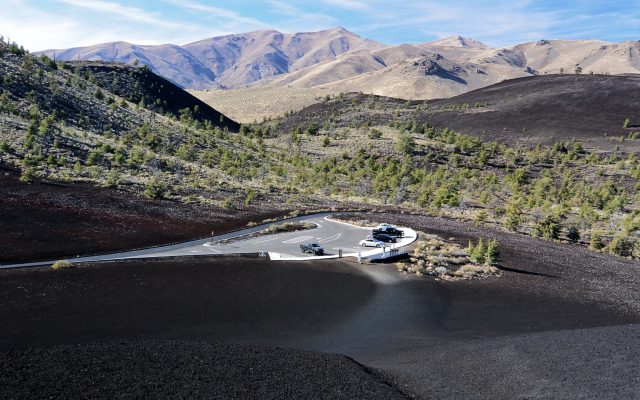
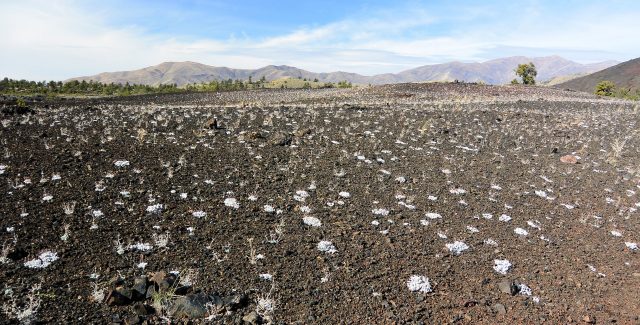
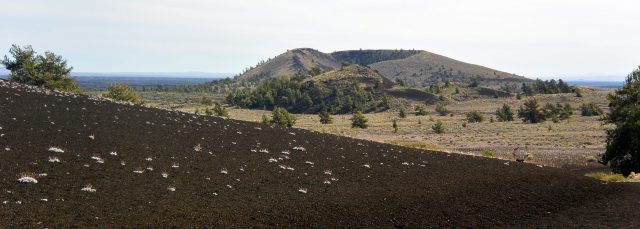
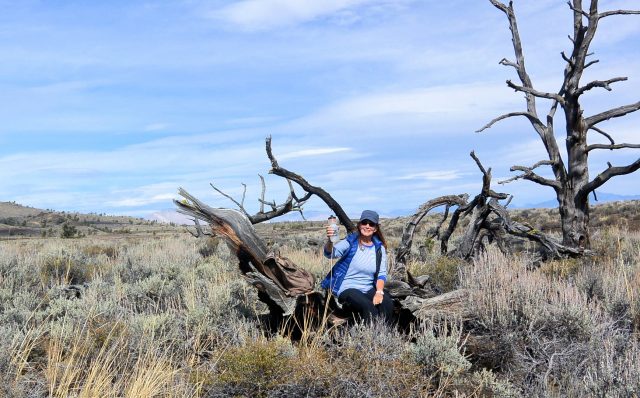
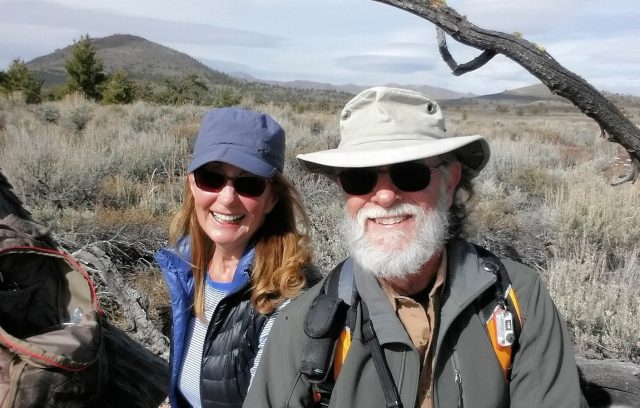
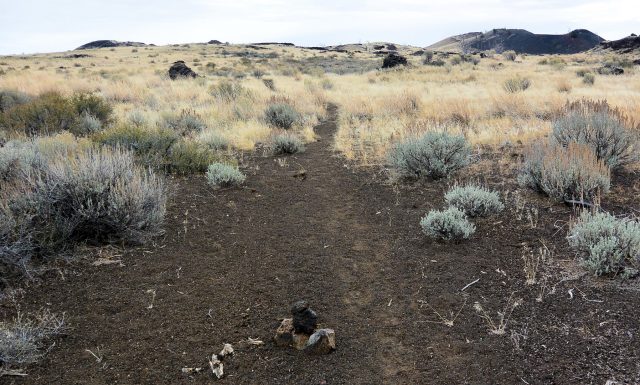
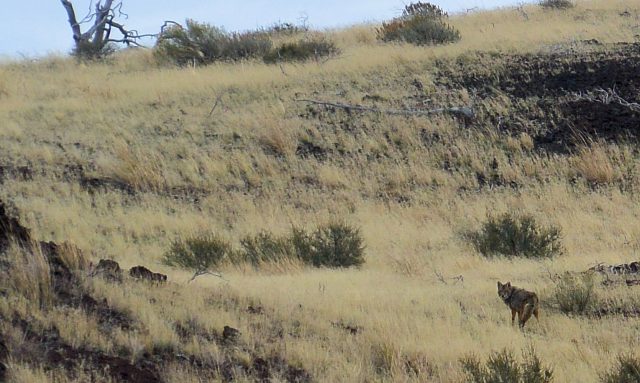
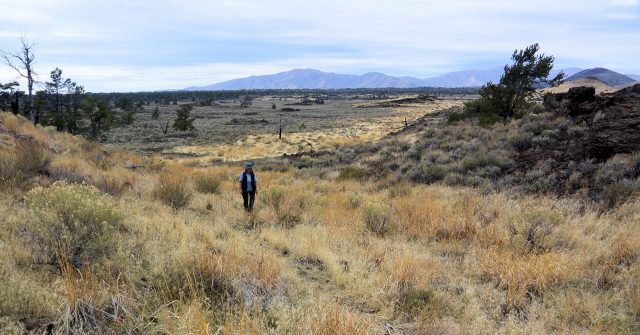
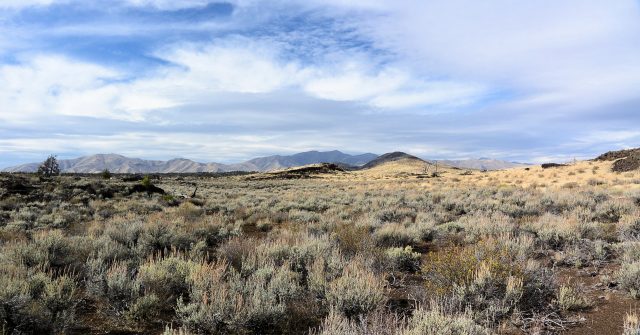
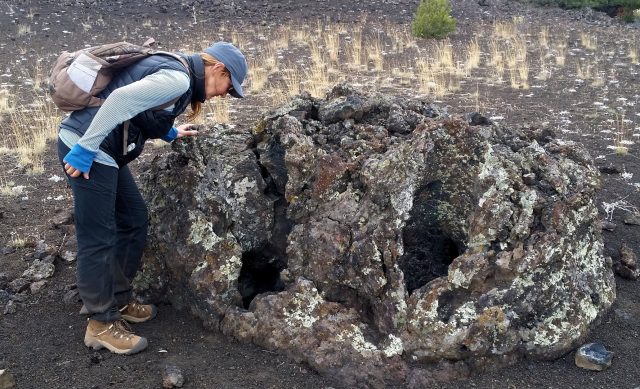
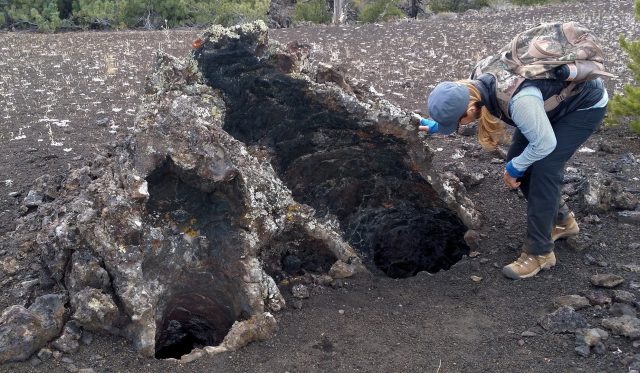
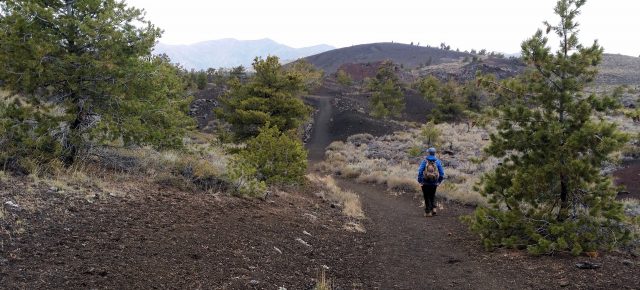
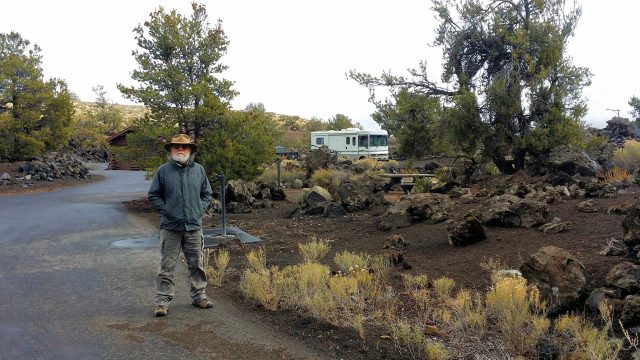
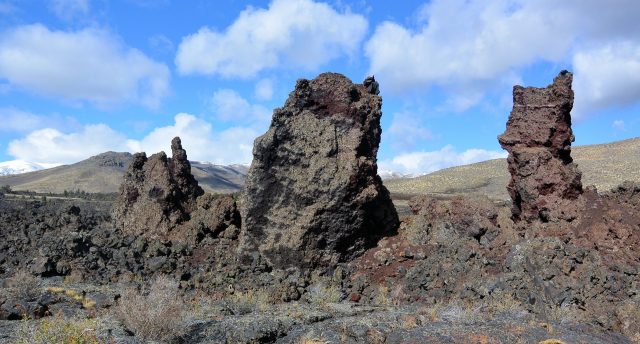
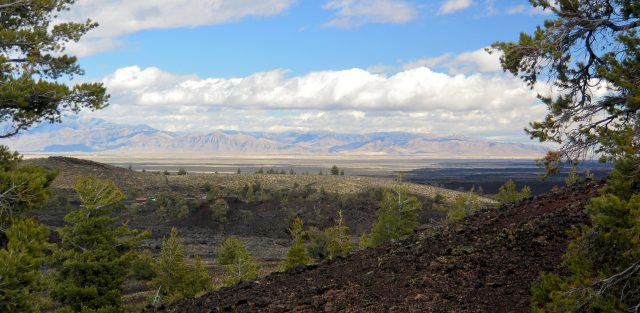
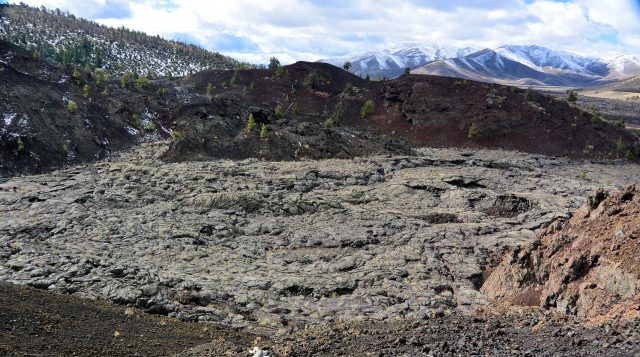
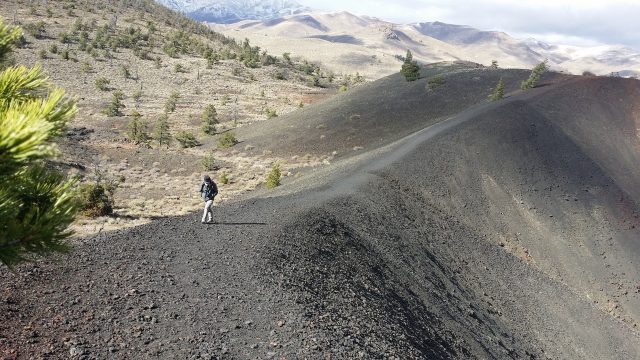
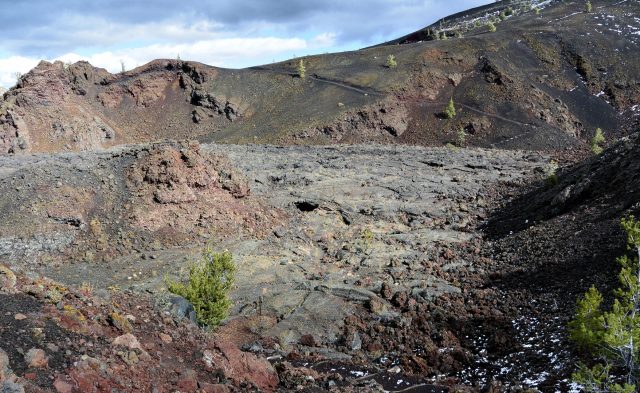
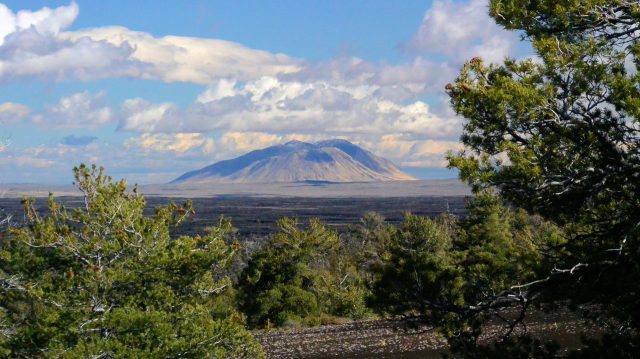
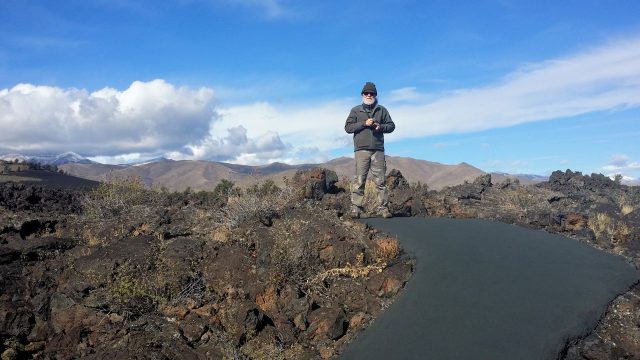
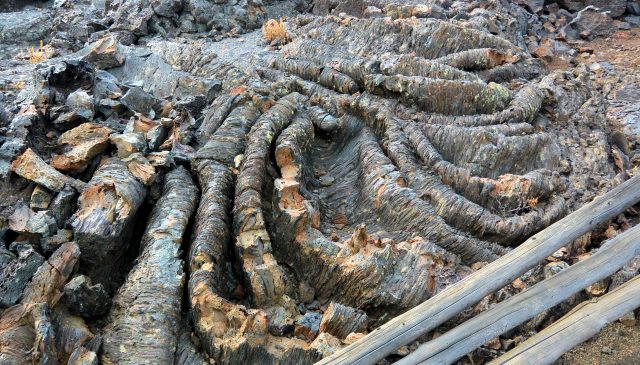
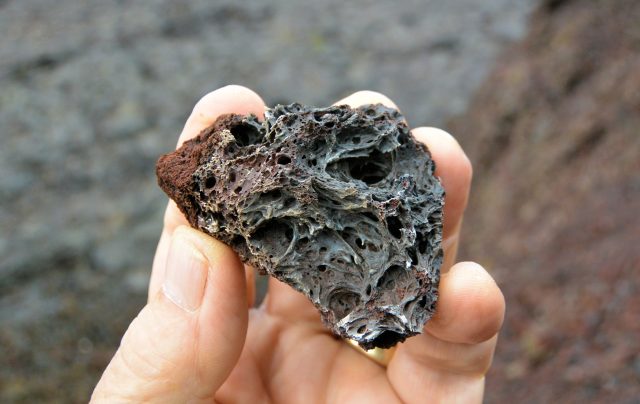
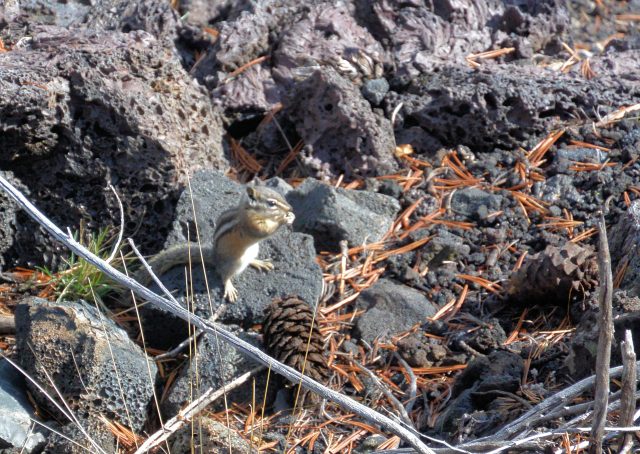
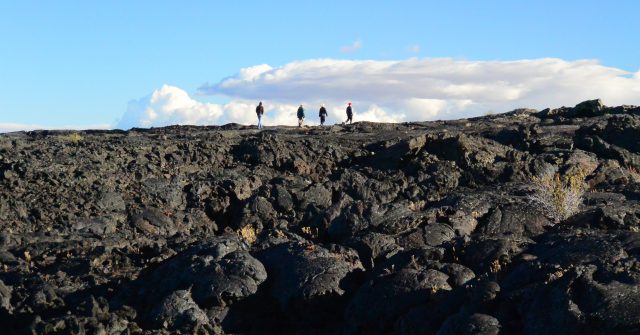
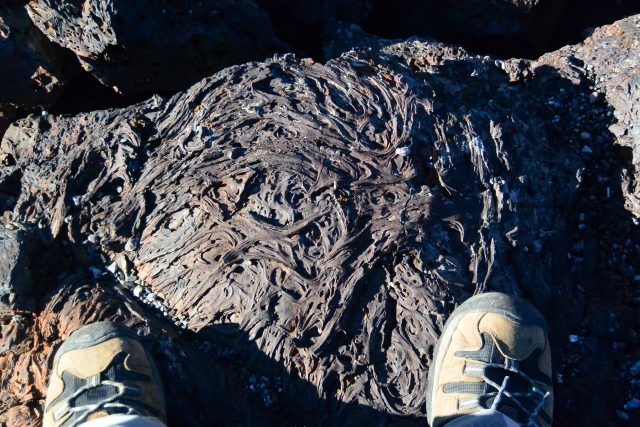
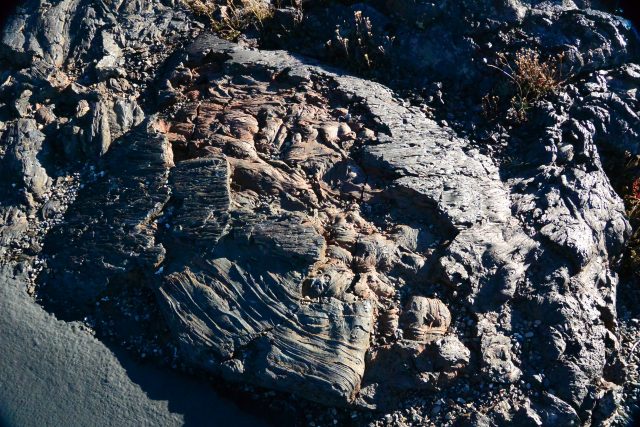
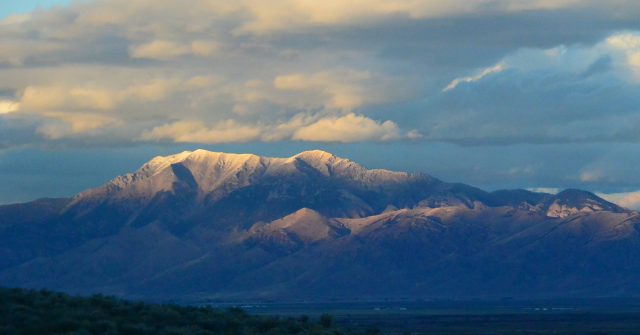
Thank you for the beautiful pictures of Craters of the Moon. We stopped for only 30 minutes around two AM on our way back from Lori’s ranch in Montana last year. It was magical in the moon light and I appreciate seeing more.
There are some fun lava tubes to explore here in California up near Mt Lassen.
Oddly I was looking at pictures of those same numbers on the cliffs above Arco just last week. One of my employees just spent two weeks there with his dad. His dad is from Arco and it was his dad’s 60 something year high school reunion.
Your posts and the happiness on both of your faces (not saying YOU are two faced) is motivating me to hurry up and retire.
Robert,
All our best wishes for your earliest retirement. Meanwhile, SOMEBODY has to be paying into FICA or our Social Security checks would bounce. Thanks so much for your contribution.
:o)
I like your music too.
G.